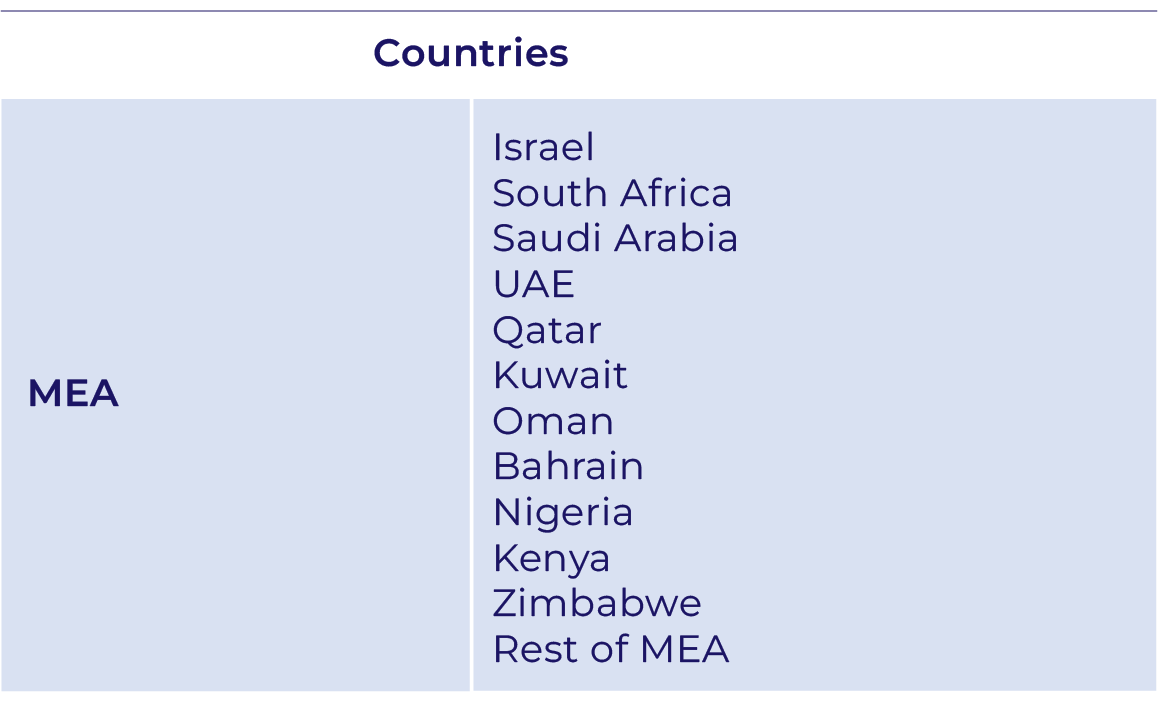MEA Cable Market Outlook
Resilient Infrastructure to Power Regional Digital and Electrification Goals
The Middle East and Africa (MEA) cable market is undergoing a transformative shift, aligned with the region's larger vision of achieving energy security, digitization, and sustainable urbanization. The MEA cable market is projected to be valued at approximately USD 21.4 billion by 2033, according to DataCube Research. This expansion is driven by an integrated regional effort to modernize electricity transmission, establish smart cities, expand internet penetration, and develop EV corridors.
Across Gulf countries, investments in renewable energy, smart metering, and underground HV and LV cable deployment are surging. Africa, meanwhile, is leveraging submarine and rural fiber cabling to bridge its digital divide. High-growth economies such as the UAE and Saudi Arabia are capitalizing on smart building and fiber-optic infrastructure rollouts, while Nigeria, Kenya, and Egypt are strengthening national backbones for e-governance, fintech, and telecom. These multi-layered drivers form the basis for an accelerating cable ecosystem across the MEA landscape.
Electrification, Energy Digitization, and Smart Infrastructure Drive Market Growth
A key growth driver is MEA's commitment to smart grid development and renewable energy transition. Countries like Egypt and Morocco have rolled out utility-scale solar farms requiring resilient cable networks embedded with digital monitoring capabilities. Similarly, Saudi Arabia’s NEOM project and the UAE’s Net Zero 2050 initiative are investing in eco-compliant cable technologies, including low-smoke zero-halogen (LSZH) and flame-retardant fiber systems.
Additionally, demand for fiber-optic cables is being bolstered by the region’s 5G deployment and data center proliferation. Africa's internet user base is expected to surpass 600 million by 2030, necessitating rapid expansion of fiber backhaul. Submarine cable demand is also rising, exemplified by major projects such as the 2Africa cable system connecting 26 countries. Defense, oil & gas, and logistics sectors are adopting shielded and instrumentation cables to manage mission-critical operations in harsh environments.
However, geopolitical instability and uneven economic recovery post-COVID have restrained cross-border logistics and procurement of raw materials like copper and polymers. These challenges are compounded by a shortage of skilled cable engineers and technical labor.
Trending Technologies and Emerging Opportunities Across Cable Applications
Notable cable market trends in the MEA region include the adoption of Internet-of-Things (IoT) enabled smart cables for monitoring performance in real-time, particularly in utilities and infrastructure. Additionally, fiber-to-the-home (FTTH) projects in cities such as Riyadh, Lagos, and Nairobi are accelerating demand for compact, modular cable formats with minimal installation disruption.
Opportunities are also opening in specialized segments like marine-rated cables for Red Sea and Gulf port electrification, and armored cables for cross-border energy integration in East and Southern Africa. The African Continental Free Trade Area (AfCFTA) further boosts the case for regionalized cable production and harmonized technical standards.
Vertical-specific demand—such as for telehealth-grade cables in hospital expansions, or hybrid energy cables in commercial and industrial solar installations—represents high-margin opportunities for OEMs and local suppliers willing to innovate.
Regulation and Incentives Catalyzing Infrastructure Rollout
Government-backed projects under programs like Saudi Vision 2030, Egypt’s Digital Egypt strategy, and Kenya’s Vision 2030 have established regulatory roadmaps for cable system standardization and quality control. Regional regulators, such as the GCC Standardization Organization (GSO) and African Electrotechnical Standardization Commission (AFSEC), are increasingly mandating LSZH and eco-label compliant cable materials for new builds.
Subsidies and public-private partnerships (PPP) have helped lower the cost of deploying underground electrical and broadband cabling. Several African nations are receiving infrastructure financing via multilateral banks such as the African Development Bank and World Bank, where cable procurement is subject to quality certification and sustainability criteria.
Core Influencing Factors Reshaping the MEA Cable Ecosystem
The cable industry in MEA is being influenced by several macro factors, including the pace of smart city development, the expansion of rural electrification programs, and rising per capita internet consumption. For example, the penetration of smart homes in the UAE is forecasted to reach 18% by 2026, which directly correlates with high demand for smart power, control, and data cables.
Cable manufacturing capacity across Egypt, South Africa, and the UAE has increased notably since 2022, with local players investing in extrusion technology, R&D labs, and testing centers. However, import dependency on copper and optical fiber preforms still poses supply-side risks. Regional inflation, currency volatility, and infrastructure project insurance rates are additional headwinds impacting final cost structures.
Strategic Moves and Market Differentiators in MEA’s Competitive Cable Sector
The MEA cable market features a blend of domestic players and global manufacturers. Companies such as Elsewedy Electric (Egypt), Riyadh Cables (Saudi Arabia), and Ducab (UAE) are establishing dominance through capacity expansion and technical innovation. For instance, Ducab launched its HVDC-ready facility in 2024 to cater to the GCC’s energy transmission ambitions.
Strategic partnerships are also reshaping the competitive landscape. French firm Nexans launched a submarine cable joint venture with a Moroccan utility to strengthen Africa-Europe energy flows. OEMs are increasingly integrating advanced sensor technology and IoT platforms to enable predictive cable diagnostics in utility and telecom networks. This shift aligns with digital twin adoption in urban infrastructure and mega-events like Expo 2030.
Cabling as the Backbone of MEA’s Next-Gen Energy and Digital Vision
MEA's diverse cable landscape is unified by a shared ambition—to become a digitally and electrically connected region. With submarine fiber weaving cross-continental links, HV cables enabling solar corridors, and low-voltage smart cables powering remote health, education, and transport nodes, the cable market is both a barometer and catalyst of regional progress.
As countries push forward on e-governance, EV infrastructure, and carbon-reduction strategies, cable manufacturers must respond with innovations in material science, modularization, and deployment efficiency. The market’s future lies in its ability to localize production, integrate technology, and align with global sustainability standards.








